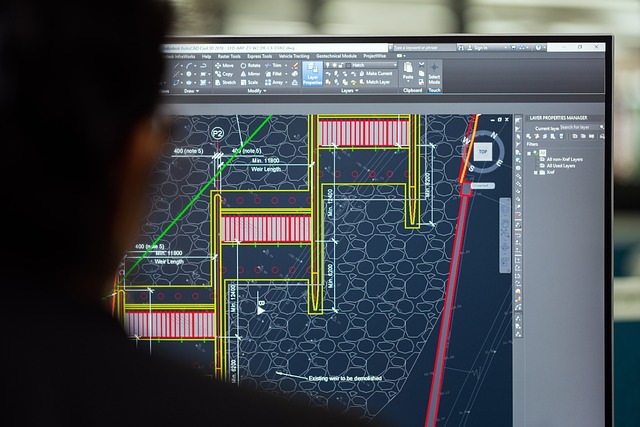Big Ideas Need More Than Just Imagination
Every major project begins with an idea. It could be designing a new aircraft, developing a satellite system, or creating a piece of complex medical equipment. At first, the concept can seem exciting and full of possibilities. But as soon as the planning starts, the challenges become clear. Large projects often involve many teams, countless components, and a long list of requirements. Without a clear way to manage all these moving parts, even the best ideas can stall.
Instead of relying only on documents and separate plans, MBSE uses a shared model that everyone involved can work from. This approach makes it easier to track requirements, changes, and progress, while helping teams communicate without confusion.
Why MBSE Is Different from Traditional Methods
Traditional engineering often depends on long, detailed documents that describe the system. While these documents are important, they can become outdated quickly. Different teams may end up working from different versions, creating gaps and misunderstandings.
MBSE changes this by creating a living, visual model of the system. This model isn’t just a drawing—it includes the design, functions, requirements, and even test plans. When changes are made, the model updates in one place, so every team sees the same version. This single source of truth reduces the risk of costly errors and keeps the project moving forward.
For teams that want expert guidance setting up or improving their MBSE process, finding the right mbse support can save time and prevent problems later in the project. Having experts involved early can make sure the model is built correctly and works for everyone involved.
How MBSE Brings Clarity to Complex Projects
In large projects, it’s easy for information to get lost. One group might focus on mechanical design, another on software, and another on testing. If each group works in isolation, mistakes and delays are almost guaranteed.
MBSE addresses this by linking every part of the project into one model. If the mechanical design changes, the software team can immediately see how it affects their work. If a new requirement is added, everyone can see it in the model and understand what needs to be adjusted.
This level of visibility is critical when working on systems where safety, performance, and precision matter. A missed connection or misunderstood requirement in these environments can lead to expensive rework or even safety risks.
Making Communication Easier Between Teams
One of the toughest parts of big engineering projects is simply getting everyone to understand each other. Different teams often use their own tools, their own language, and their own ways of working. That can make sharing information slow and confusing.
MBSE solves this by giving everyone the same playbook. It’s one shared model that uses the same structure and the same definitions, no matter what role you have on the project. A systems engineer can set out the requirements in the model. Designers can link their work directly to those requirements. The testing team can connect their plans and results to the exact same points. Nothing gets left out, and everyone can see how their part fits into the overall system.
It also makes life a lot easier for new team members. Instead of digging through stacks of documents, they can jump into the model and see how everything connects in minutes.
Saving Time and Reducing Risk
Projects that use MBSE tend to run faster and with fewer problems. That’s because potential issues are spotted early—often long before anything is built. With traditional methods, some problems don’t show up until testing, when fixing them costs more time and money.
With MBSE, teams can simulate the system before building it. They can run “what if” scenarios, watch how the system reacts, and find weak spots. This means fewer surprises later on, and fixes happen when they’re still quick and inexpensive.
This early problem-solving is especially important in fields where mistakes can be costly or dangerous. Finding and fixing a flaw during planning is far safer than trying to patch it after production starts.
Adapting to Changes Without Losing Control
Big projects never stay exactly the same from start to finish. Regulations might change, customers may ask for new features, or better technology might come along. Without a solid process, these changes can slow everything down.
MBSE makes these shifts easier to handle. Because everything is linked in one model, teams can quickly see what parts will be affected. They can check the impact before making a move, so nothing slips through the cracks.
This kind of flexibility keeps work on track, even when the plan has to change. It also helps teams stay compliant with industry rules and standards—something that’s essential in areas like aerospace, defense, and healthcare.
Real-World Examples of MBSE in Action
MBSE isn’t just theory—it’s already powering some of the most advanced engineering projects on the planet. Space agencies use it to design spacecraft, where every single system has to work together without fail. In the automotive industry, MBSE helps teams develop advanced driver-assistance systems that blend hardware, software, and sensors into one reliable package.
In these kinds of projects, MBSE isn’t just helpful—it’s essential. Without a shared model to coordinate work between hundreds or even thousands of people, the complexity would be overwhelming.
Why More Organizations Are Making the Switch
As projects grow larger and more complex, the weaknesses of older, document-heavy methods become obvious. More companies are turning to MBSE because it improves collaboration, speeds up development, and helps avoid costly mistakes. Another big advantage is reusability—once a model is built, parts of it can be used again for future projects, saving both time and resources.
Switching to MBSE can feel like a big step, especially for organizations used to traditional methods. But with the right training and support, the transition is often smoother than expected. And once teams start seeing the results, the effort to get there quickly proves worthwhile.
Key Takeaways
Model-Based Systems Engineering is far more than a different way to keep track of project details. It creates a shared space where everyone can work together, spot issues earlier, and adapt to changes without losing control. Instead of juggling multiple, outdated documents, teams work from one model that stays accurate from start to finish.



